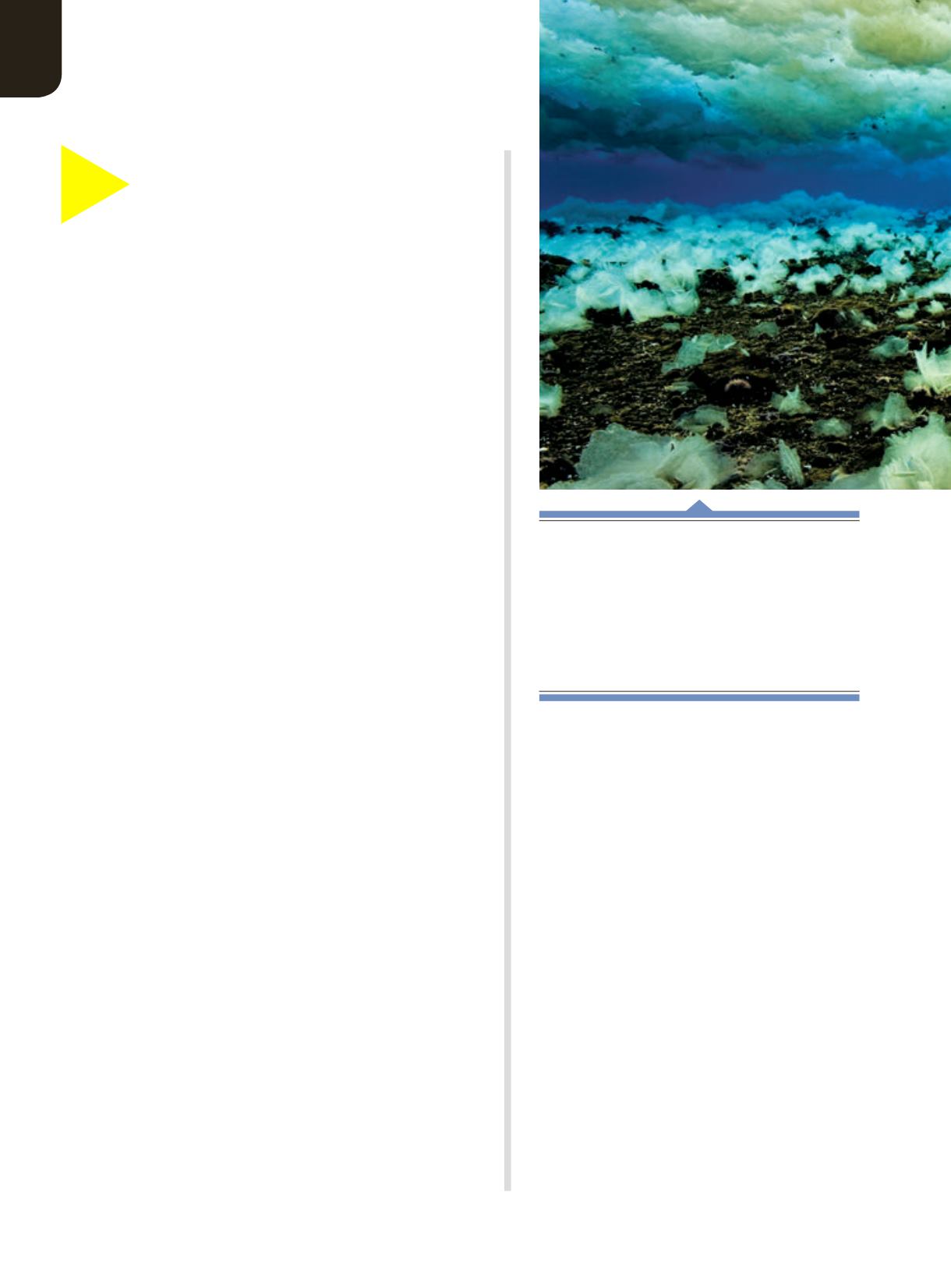

ANCHOR ICE
Super-cooled saltwater mixes with meltwater from the ice shelf,
and the combination is less salty and more buoyant. Thus, instead
of sinking, as cold brine does, the super-cooled shelfwater rises
from under the ice shelves in plumes, pooling under the sea ice and
creating a super-cooled layer that can measure up to 100 feet thick.
Where this mass of water touches the seafloor, fields of delicate
stalagmites grow on the rocks, providing hiding places for all
manner of benthic creatures and even fish.
90
|
WINTER 2017
Last October I saw an article by Brian Clark Howard on
NationalGeographic.comthat warmed my heart, even as it
discussed one of the coldest places on the planet:
A remote and largely pristine stretch of ocean off
Antarctica received international protection on Friday,
becoming the world’s largest marine reserve as a broad
coalition of countries came together to protect 598,000
square miles of water.…
South of New Zealand and deep in the Southern (or
Antarctic) Ocean, the 1.9-million-square-mile Ross
Sea is sometimes called the “Last Ocean” because it is
largely untouched by humans. Its nutrient-rich waters
are the most productive in the Antarctic, leading to huge
plankton and krill blooms that support vast numbers of
fish, seals, penguins, and whales.
Some 16,000 species are thought to call the Ross Sea home,
many of them uniquely adapted to the cold environment.
A 2011 study in the journal
Biological Conservation
called
the Ross Sea “the least altered marine ecosystem on Earth,”
citing intact communities of emperor and Adelie penguins,
crabeater seals, orcas, and minke whales.
The sea’s remoteness has meant it has largely escaped
the heavy fishing and shipping pressure that has
impacted so much of the world’s ocean, although rising
prices for seafood and the low cost of fuel have made
some fishermen eye the waters as potential new grounds
in recent years. Some fishing already occurred there for
Antarctic toothfish, a predatory fish that is sold as the
highly prized Chilean sea bass.
But fishing will no longer be allowed in 432,000 square
miles of the new reserve (some toothfish fishing is expected
to proceed in a specially designated zone in the remainder
of the protected area). The new protection will go into
force on December 1, 2017.
The newly protected area “shows that the world can
successfully cooperate on global environmental issues,”
says Enric Sala, a marine biologist and National
Geographic Explorer-in-Residence who leads the Pristine
Seas project.
“The Ross Sea is probably the largest ocean wilderness
left on our planet,” he says. “It is the Serengeti of
Antarctica, a wild place full of wildlife such as emperor
penguins, leopard seals, minke whales, and killer whales.
It’s one of these rare places where humans are only
visitors and large animals rule.”
With this environmental success story as background, I
went to the man who was the primary visual architect of
Ross Sea conservation, John Weller, to learn more.
IMAGING
SHOOTER
“THE ROSS SEA IS
PROBABLY THE LARGEST
OCEAN WILDERNESS LEFT
ON OUR PLANET,” HE
SAYS. “IT IS THE SERENGETI
OF ANTARCTICA, A WILD
PLACE FULL OF WILDLIFE
SUCH AS EMPEROR
PENGUINS, LEOPARD
SEALS, MINKE WHALES,
AND KILLER WHALES.
IT’S ONE OF THESE RARE
PLACES WHERE HUMANS
ARE ONLY VISITORS AND
LARGE ANIMALS RULE.”


















